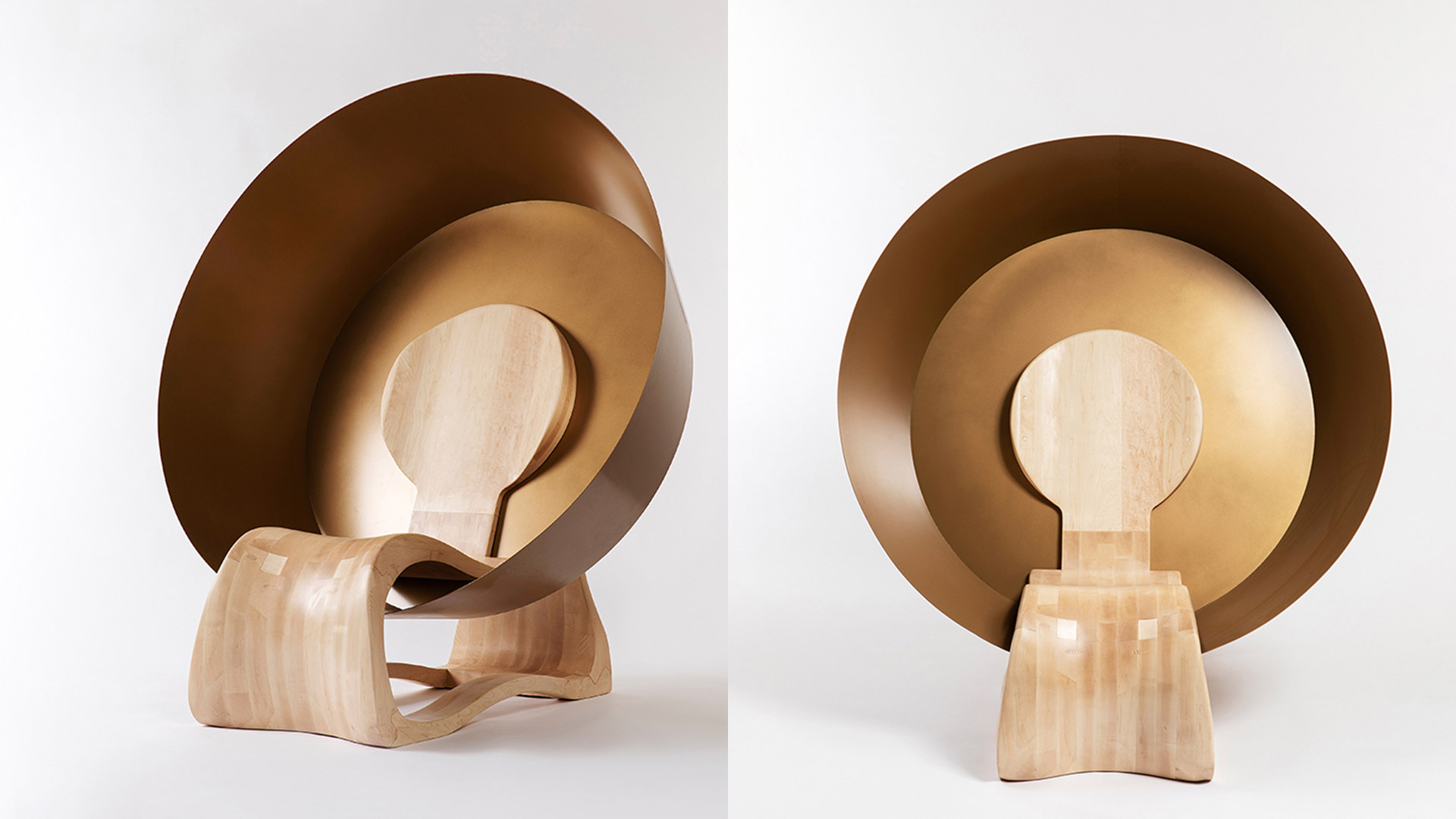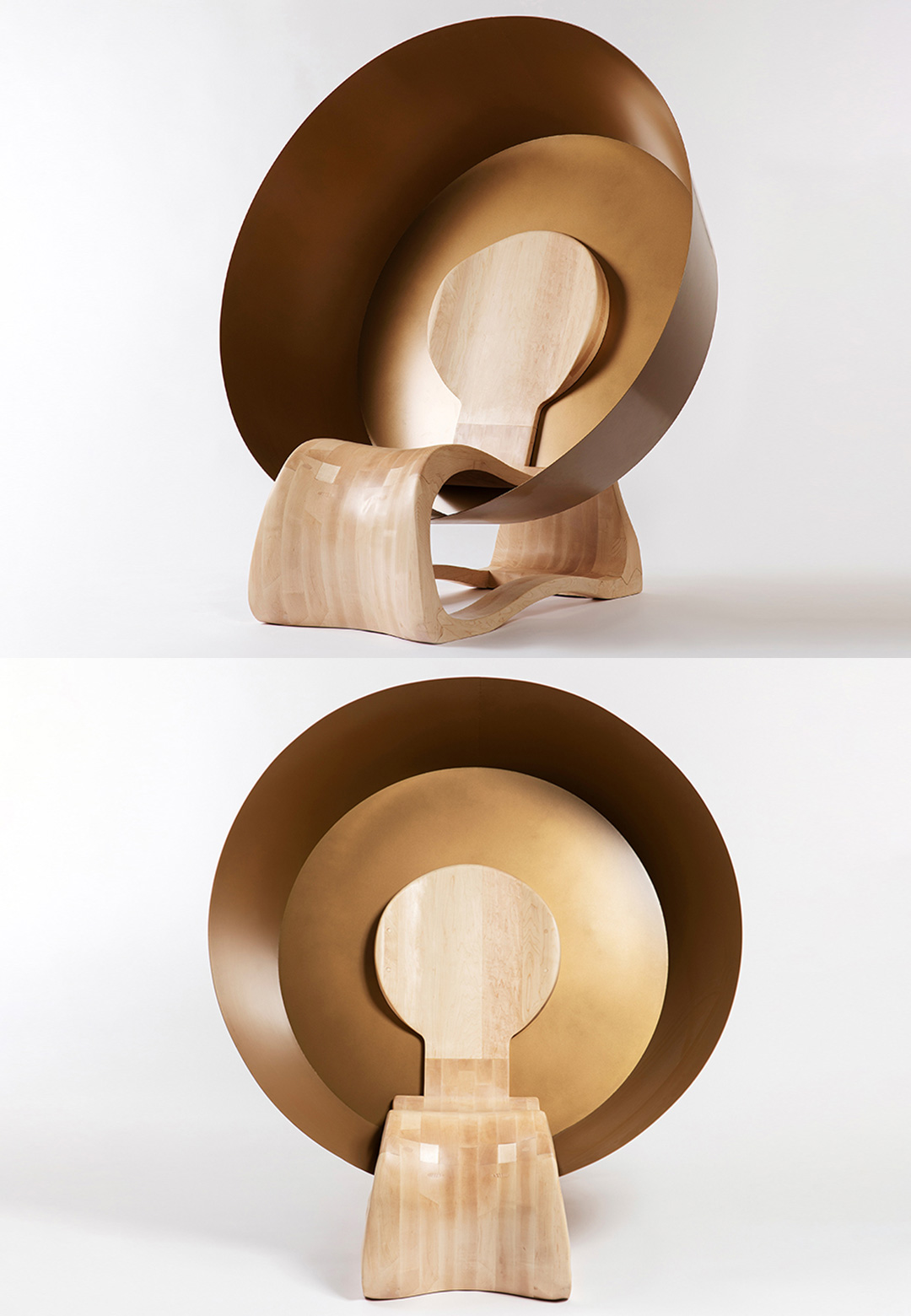Could sound be the medicine of the future? A quote once assigned to the American sleeping prophet, Edgar Cayce, finds respite in music and sound therapy that has been an essential part of healing since times immemorial. While many industrial designers strive to creatively entail sound therapy as a design device in an assortment of products and functional objects, what happens when a chair takes charge of therapeutic healing by reshaping itself as an age-old meditative object? Korean designer Lee Ye Chan reimagines a chair design as a contemporary object for meditation. Inspired by the traditional Tibetan singing bowls, the Goyo chair is designed as a human-centric singing bowl that produces quiet; healing sounds when struck on its metal shell. “ People sit on sofas or cushions for meditation. But a quiet space for meditation is also important. You can go into a large singing bowl and meditate quietly while feeling the resonance of the sound. This project is a design of a meditation chair that provides a quiet space," says Chan.
STIR delves deeper into the concept of sound therapy and the illustrious design of the Goyo chair.
Tibetan singing bowls and the concept of sound therapyTibetan singing bowls have been objects of regenerative healing for over 6,000 years. These singing bowls, traditionally made of a metal bowl forged with alloys and accompanied by a ‘striker’ gong, work through an acoustic phenomenon that harmonises and allows deep relaxation of the brain by stimulating stress relief and eliminating toxins from the body. As part of sound therapy, the singing bowl is struck with a gong to produce soft vibrations that can be felt through the palm holding the bowl and throughout the body. The vibrations become more harmonious and tranquil as one rubs the rim of the bowl. Diving deeper into the conceptual history of sound therapy, one must note its origins, which date back to ancient Egypt, Greece and Tibet, wherein the learned and the sacred used the sounds of vowels, healing hymns, and even strumming vibrations as active means of healing different ailments. The rituals and paraphernalia of sound as a mode of therapy continue to grow through the world of art and design across all its facets, just as a crucial panacea for ever-uproaring lifestyle disorders and psychological dissociations and stress.
The design of the harmonising Goyo chairThe Korean designer fashioned a minimal, contemporary design of the chair using maple wood while befitting the structural backrest within a colossal rounded steel structure resembling a singing bowl. Conceptualised as an intimate space that is a perfect retreat from the everyday stress-inducing environment, the chair is designed to fit any trendy residential or commercial interior. Chan encourages contemplation and physical restitution by enabling every user to lean back and unwind, just as the furniture designed to be a healing instrument exudes sinuous vibrations to soothe the mind. The design elevates the significantly smaller singing bowls by using organic wood and steel to carve an experience. For one to experience the vibrational harmonies and to gear the therapy of sound, the large steel bowl needs to be struck from the outside, just as in the Tibetan singing bowls, to host the soft reverberations and resonating ripples of therapeutic sound. The deep inclination of the seat ensures a complete dissociation from the surroundings and offers a highly meditative space. In spite of the evenly-rounded, organic form of the chair design, a deep peripheral closure and hardwood surfaces may contribute to ergonomic discomfort for its users.
Exploring sound therapy through furnitureFrom the Freud chaise lounge, attested by the legendary psychologist Sigmund Freud for its psychoanalytic functions to the German Monochord chair that works on a similar harmonising principle, the concept of musical chairs, tables, and beds that transpose a stressful mind into a state of nonchalance has long been prevalent in the world of design and sound therapy. Chan’s Goyo offers itself as an aesthetically appealing chair in tandem with its qualitative addition to a soothing environment, but the design world has long been enriched with multiple therapeutic chairs that are both technologically driven and compact.
The German Monochord Singing Chairs; are handcrafted to enable an exceptional full-body experience of sound, vibrations and therapy. In a monochord chair or bed, a person comfortably lounges while a sound therapist strums the diverse strings across the backrest to inculcate sonic wavelengths across the body. Similarly, the Vibroacoustic music chairs work on the 40-year-old principles of Vibroacoustic therapy. According to the concept, automated vibrating inductors are installed within the base of a chair to produce sonic vibrations at equal intervals throughout the body.
The Goyo chair has a rich concept that merges the traditional design of a Tibetan singing bowl with modern materials and techniques that are not mechanically invasive. Chan’s design certainly offers food for thought behind the growing importance of product design in curing emotional, physical and psychological concerns.






 Sign in with email
Sign in with email










What do you think?